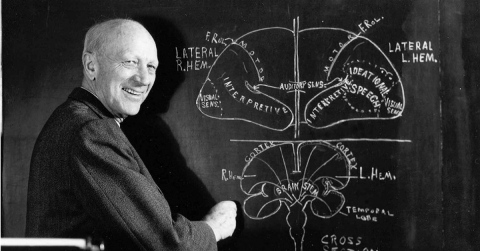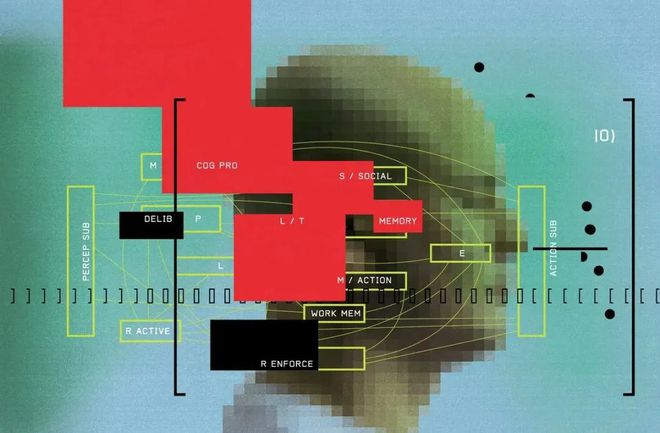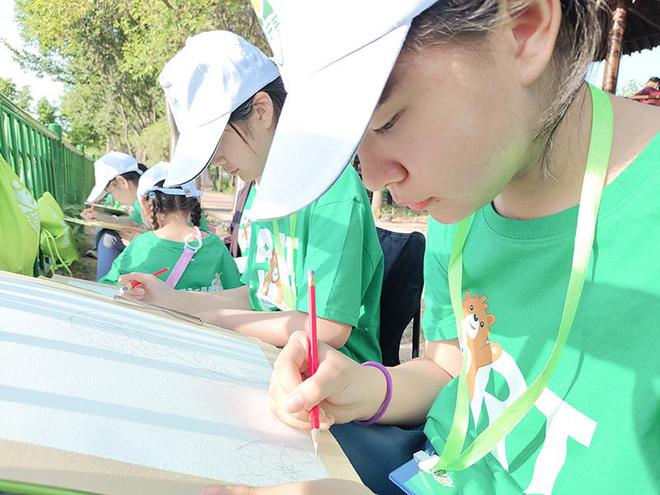神经科学研究的里程碑
神经科学研究的里程碑
一些见证神经科学史的最佳文献:
A.K. Afifi and R.A. Bergman, Functional Neuroanatomy, New York: McGraw-Hill, 1998. 在这本书的页缘空白处满满的都是关于神经解剖结构以及相关发现的历史溯源。
M.R. Bennett, Brain Research Bulletin, 50:95-118, 1999. 一本介绍由柏拉图到薛林顿的突触早期研究史
M.A.B. Brazier. A History of the Electrical Activity of the Brain, London: Pitman, 1961. 脑电位活化状态研究史
M.A.B. Brazier. A History of Neurophysiology in the 19th Century, New York: Raven Press, 1988. 19世纪神经生理学史
E. Clarke and K. Dewhurst. An Illustrated History of Brain Function, Berkeley: University of California Press, 1972. 图说大脑功能研究史
E. Clarke and C.D. O'Malley. The Human Brain and Spinal Cord, Berkeley: University of California Press, 1968. 人类大脑与脊髓
S. Finger. Origins of Neuroscience, New York: Oxford University Press, 1994. 神经科学源起
S. Finger. Minds Behind the Brain: A History of the Pioneers and Their discoveries, New York: Oxford University Press, 2000. 脑部研究的幕后功臣:研究先驱们的个人史与他们的发现
R.L. Francis. The Illustrated Almanac of Science Technology and Invention, New York: Plenum Press, 1997. 科学技术与发明之图鉴
C.G. Gross. Brain, Vision, Memory. Tales in the History of Neuroscience, Cambridge, MIT Press, 1998. 神经科学史故事集
A.S. Harding. Milestones in Health and Medicine, Phoenix (AZ) Oryx Press, 2000. 健康与药物的里程碑
E.R. Kandel and L.R. Squire. Neuroscience: Breaking Down Scientific Barriers to the Study of Brain and Mind, in Science, 290:1113-1120, 2000. 神经科学:突破科学的藩篱-脑与心智的研究
L.H. Marshall and H.W. Magoun. Discoveries in the Human Brain, Totowa; Humana Press, 1998. 发现人脑的奥秘
F.C. Rose and W.F. Bynum. Macdonald Critchely纪念特辑Historical Aspects of the Neurosciences. A Festschrift for Macdonald Critchely, New York: Raven Press, 1982. 神经科学史
A. Sebastian. Dates in Medicine. A Chronological Record of Medical Progress Over Three Millennia, New York: The Parthenon Publishing Group, 2000. 历史上的医学:由临床记录看三千年来的医疗进展
G.M. Shepherd. Foundations of the Neuron Doctrine, New York: Oxford University Press, 1991. 神经学原理
B.E. Swartz and E.S. Goldenshon. Timeline of the history of EEG and associated fields, Electroenceph. Clin. Neurophysiol., 106:173-176, 1998. 脑电图(EEG)与相关领域的发展史
下列资料与事件由许多来源整合而来。这些事件并非全然都是神经科学领域的重要事件…有些事件是作者筛选过后选择放入篇幅的。
公元前4000年(4000 B.C.)到公元元年
ca. 4000 B.C.-在闪族人的记录中有关于罂粟可让人有兴快感的记载。
ca. 4000 B.C.-美索不达米亚的泥桌上有关于如何以酒精稀释药物的一些论述文字。
ca. 2700 B.C.-神农氏(Shen Nung)发明针灸(acupuncture)。
ca. 1700 B.C.-爱得恩史密斯撰写外科手稿,这是史上第一次关于神经系统的记载。
ca. 500 B.C.-意大利科罗托那(Crotona)的学者Alcmaion 对神经细胞进行解剖。
460-379 B.C.-希腊名医希波克拉底(Hippocrates)认为癫痫(epilepsy)是脑部的一种失序状态。
460-379 B.C.-希腊名医希波克拉底(Hippocrates)认为脑部参与了人的感官觉受,并且是智慧的所在地。
387 B.C.-柏拉图在雅典教学。他相信脑是心智运作的所在地。
335 B.C.-亚理斯多得(Aristotle)着墨于睡眠;并且相信心脏是心智运作的所在地 。
335-280 B.C.-解剖学之父赫罗非勒斯Herophilus相信脑室是人类智慧之所在 。
280 B.C.-埃拉希斯特拉塔斯(Erasistratus)摘记了脑部的分区 。
公元元年(0 A.D. 到公元1500年)
177-盖伦(Galen)发表 「On the Brain」的演说。
ca. 100-马理诺(Marinus)描述第十对脑神经(cranial nerve)。
ca. 1000-Alhazen将眼睛与相机之类的设备做比较 。
1316-Mondino de'Luzzi 写下第一本欧洲的解剖教科书(Anothomia)。
1410-西班牙的Valencia建立心理疾病研究中心。
Image courtesy of the National Library of Medicine,
History of Medicine Collection
公元1500-1600
1504-李奥纳多˙达文西 (Leonardo da Vinci) 制作人类新式的石蜡模型。
1536-Nicolo Massa 描述脑脊髓液。
1538-Andreas Vesalius 出版Tabulae Anatomicae。
1543-Andreas Vesalius 出版 「身体的运作On the Workings of the Human Body」。
1543-Andreas Vesalius 探讨松果腺(pineal gland)并且为纹状体(corpus striatum)。
1550-Vesalius 探讨水脑症(hydrocephalus)。
1550-Bartolomeo Eustachio 描述视神经在脑部的起点。
1561-Gabriele Falloppio 出版"Observationes Anatomicae" 并且描述某些脑神经(cranial nerves)区分出滑车神经(trochlear)并且发现外旋神经(abducens nerves )。
1562-Bartolomeo Eustachio 出版听觉器官检查手册 "The Examination of the Organ of Hearing"。
1564-Aranzi创造出"hippocampus"这个词。
1573-Constanzo Varolio 为桥脑(pons)命名。
1573-Constanzo Varolio 首次由底侧将脑部切割下来的人。
1573-Girolamo Mercuriali 撰写De nervis opticis 描述视神经的解剖学。
1583-Felix Platter陈述到晶体只是负责让光线聚焦而视网膜才是真正形成影像的地方。
1586-A. Piccolomini 区分出灰质与白质。
1587-Giulio Cesare Aranzi 描述脑室以及海马回他也以实验展示出视网膜上的影像是倒立的。
1590-Zacharias Janssen 发明复式显微镜(compound microscope)。
1596-Sir Walter Raleigh 于他所著的"Discovery of the Large, Rich and Beautiful Empire of Guiana"这本书中提到箭毒(arrow poison)。
Leonardo Da Vinci
Andreas Vesalius
Image courtesy of the Blocker History of Medicine Collections, Moody Medical Library, Univ. Texas Med. Branch, Galveston
公元1600-1700
1604-Johannes Kepler 描述到在视网膜上的影像是倒立的。
1609-J. Casserio 首先发表文章描述大脑的乳头状体(mammillary bodies)。(译者注:乳头状体属于边缘系统的一部份,与情绪反应有关。)
1611-Lazarus Riverius 出版描述意识受损的教科书。
1623-Benito Daca de Valdes 出版第一本视觉检查以及验光、配眼镜的书籍。
1641-Franciscus de la Boe Sylvius 脑部侧面上的裂缝 (Sylvian fissure)。
1649-Rene Descartes 提到 松果腺(pineal)是空置身体与心灵的中心。
1650-Franciscus de la Boe Sylvius 描述到在第三、第四脑室之间有一狭窄的通道称为西尔维乌斯导水管 (the aqueduct of Sylvius)。
1658-Johann Jakof Wepfer 提出脑中血管破裂可能会导致中风的理论(stroke)。
1661-Thomas Willis 描述脑膜炎的病例(meningitis)。
1662-Rene Descartes笛卡儿出版 「人论De homine」 (他死于公元 1650年)(译者注:De homine是身心二元论的重要著作)。
1664-Thomas Willis 以拉丁文出版"Cerebri anatome"。
1664-Thomas Willis 描述第十一对脑神经。
1664-Gerardus Blasius发现并为蛛网膜(arachnoid)命名。
1665-Robert Hooke 详细的描述他的第一台显微镜 。
1667-Robert Hooke 出版"Micrographia"。
1668-l'Abbe Edme Mariotte 发现盲点。
1670-William Molins 为命名滑车神经(trochlear nerve)。(译者注:滑车神经为运动神经,支配眼睛的上斜肌)
1673-Joseph DuVerney 在鸽子身上实验消融技术 (ablation technique)。
1681-英语版的Thomas Willis之 「Cerebri anatome」 出版。
1681-Thomas Willis 创造''Neurology"神经学这个词。
1684-Raymond Vieussens 出版''Neurographia Universalis''。
1684-Raymond Vieussens 使用沸腾的油使脑部变硬。
1686-Thomas Sydenham 描述一种发生于儿童以及青年时期的舞蹈症。
1695-Humphrey Ridley描述 蝇状体(restiform body)。(译者注:蝇状体属于下小脑脚的一部份,下小脑脚与脑干之延脑相连。)
1695-Humphrey Ridley 出版 「脑部解剖学The Anatomy of the Brain」。
1697-Joseph G. Duverney 提出「臂神经丛(brachial plexus)」这个名词。
Thomas Willis
Image courtesy of the Blocker History of Medicine Collections, Moody Medical Library, Univ. Texas Med. Branch, Galveston
公元1700-1800
1704-Antonio Valsalva 出版 「人类耳朵上的学问On the Human Ear」。
1705-Antonio Pacchioni 描述 蛛网膜颗粒(arachnoid granulations)。
1709-Domenico Mistichelli 描述 锥体交叉(pyramidal decussation)。
1717-Antony van Leeuwenhoek 描述神经纤维的横断面。
1721-麻醉''anesthesia''首次出现在英语当中 (in Dictionary Britannicum)。
1736-Jean Astruc 创造出''reflex''反射 这个词 。
1740-Emanuel Swedenborg 出版''Oeconomia regni animalis''。
1755-J.B. Le Roy 使用电痉挛治疗.(electroconvulsive therapy)心理疾病。
1760-Arne-Charles Lorry 证实小脑受损影响动作的协调性。
1764-Domenico F.A. Cotugno 描述脊髓蜘蛛膜脑脊髓液(spinal subarachnoid cerebrospinal fluid),并且展示脑室与脊髓是相互连结的。
1766-Albrecht von Haller 对脑脊液提供科学性的描述。
1772-John Walsh 在电鱼torpedo (electric) fish身上进行实验。
1773-John Fothergill 描述三叉神经痛(trigeminal neuralgia);(痛性抽搐tic douloureux, 佛舍吉儿氏症候群Fothergill's syndrome)。
1773-Joseph Priestley 爵士发现氧化亚氮(nitrous oxide)。
1774-Franz Anton Mesmer 提出 「动物磁性animal magnetism」 (后来称为催眠 hypnosis)。
1776-M.V.G. Malacarne 出版第一本小脑专书。
1777-Philip Meckel 提出内耳充满了液体,而非空气。
1778-Samuel Thomas von Sommerring 提出现在所采用的12对脑神经分类法。
1779-Antonius Scarpa 描述前庭系统的(vestibular system)史卡巴神经节(Scarpa's ganglion)。
1781-Felice Fontana 描述轴突轴索浆在显微镜下的特征。
1782-Francesco Gennari 出版 「lineola albidior「 (后来被称为Gennari斑纹)。(译者注:视觉皮质垂直切面上可见一条非常显眼白线,称为Gennari斑纹(stripe of Gennari)又称Gennari's band, Gennari's stria )
1782-Francesco Buzzi 发现视网膜中央窝。
1783-Alexander Monro 描述孟路氏孔。
1784-Benjamin Rush 写到酒精会使人上瘾。
1786-Felix Vicq d'Azyr 发现蓝斑核(locus coeruleus)。
1786-Samuel Thomas Sommering 描述视交叉(optic chiasm)这个构造。
1790-Johannes Ehrenritter 描述舌喉神经节 (glossopharygeal nerve ganglion)。
1791-Luigi Galvani 用电刺激青蛙神经并且出版成书。
1794-John Dalton 描述色盲。
1796-Johann Christian Reil 描述脑岛 (insula 或称island of Reil)。
Antony van Leeuwenhoek
Franz Anton Mesmer
Images courtesy of the Blocker History of Medicine Collections, Moody Medical Library, Univ. Texas Med. Branch, Galveston
公元1800-1850
1800-Alessandro Volta 发明湿电池。
1800-Humphrey Davy 合成 氧化亚氮(nitrous oxide)。
1800-Samuel von Sommering 发现中脑内有一黑色物质,并将其命名为'' substantia nigra'',中文名为黑核或黑质。
1801-Thomas Young 描述散光(astigmatism)。
1801-Adam Friedrich Wilhelm Serturner 萃取出鸦片结晶以及吗啡。
1805-Felix Vicq d'Azyr 发现红核(red nucleus)。
1808-Franz Joseph Gall 将他在脑相学(phrenology)上的研究出版成书。
1809-Johann Christian Reil 使用酒精使脑部硬化。
1809-Luigi Rolando uses 使用迦凡尼电流刺激皮质。
1811-Julien Jean Legallois发现呼吸中枢在髓脑(medulla)。
1811-Charles Bell 论述脊髓的背根神经节与腹根神经节功能上的差异。
1813-Felix Vicq d'Azyr发现大脑屏状核(claustrum)。
1817-James Parkinson 出版颤瘫研究论文 ''An Essay on the Shaking Palsy''。(译者注:Shaking Palsy,称颤瘫,也就是现在为人所知的帕金森氏病Parkinson's disease。)
1818-美国卫生处(Surgeon General's Office)成立图书馆(后来变成陆军医学图书馆Army Medical Library以及国家医学图书馆National Library of Medicine)。
1820-检流计(Galvanometer)被发明出来,可以侦测微小电流,电压,电量)。
1821-Charles Bell 描述脸度神经损害所引起的同侧脸部麻痹 (颜面神经痲痹Bell's palsy)。
1821-Francois Magendie论述脊髓的背根神经节与腹根神经节功能上的差异。
1822-Friedrich Burdach 为扣带回(cingular gyrus)命名。
1822-Friedrich Burdach区分出外侧与内侧膝状神经核 (lateral and medial geniculate)。
1823-Marie-Jean-Pierre Flourens描述小脑(cerebellum)调节运动时的活动状态。
1824-John C. Caldwell 出版 「脑相学Elements of Phrenology」。
1824-Marie-Jean-Pierre Flourens 详述组织摘除术(ablation)以研究行为。
1824-F. Magendie 是第一位提出证据阐述小脑在平衡上所扮演的角色。
1825-John P. Harrison 对于脑相学提出反驳。
1825-Jean-Baptiste Bouillaud 在论文中呈述前额叶受损后导致语言能力的丧失。
1825-Robert B. Todd 探讨大脑皮质在心理活动时所扮演的角色,以及纹状体(corpus striatum )在运动中所扮演的功能以及中脑在情绪功能上所扮演的功能。
1825-Luigi Rolando 描述将前后中央脑回(precentral and postcentral gyri)分隔开来的中央沟(central sulcus)。
1826-Johannes Muller 出版感觉神经专一性理论「the law of specific nerve energies」。(译者注:Muller认为人之所以会产生某一种感官觉受是因为特定的感觉器官受到刺激所致,但不见得是那个刺激本身的性质直接所致,不同的神经负责调节不同的感觉。
光线是产生视觉最常见的刺激,然而也有例外,你有打球时意外被揍了一拳〝眼冒金星〞的经验吗?压力也可以导致视觉的产生。
以电刺激任何感觉神经都可以产生与其相对应的感官。用电刺激视神经就会看见闪光,刺激听神经就会听见声音。
感觉神经总是透过特定的路径来传递讯息,并且上达特定的脑部中枢,这些中枢对输入的讯号加以整理,产生所谓的感觉。 )
1827-F. Magendie发现中央Magendie氏孔 。
1832-Justus von Liebig 发现水合氯醛(chloral hydrate)。
1832-Jean-Pierre Robiquet 萃取出可待因(codeine)。
1833-Philipp L. Geiger萃取出颠茄碱(atropine)。
1836-Marc Dax以论文阐明左半脑受损后对于言语的影响 。
1836-Gabriel Gustav Valentin 发现神经核以及核仁。
1836-Robert Remak 描述被髓鞘包裹或是未被髓鞘包裹的轴突。
1836-Charles Dickens (小说家) 描述呼吸道阻碍性睡眠呼吸暂停(obstructive sleep apnea)。
1837-Jan Purkyne (Purkinje) 描写小脑细胞; 发现神经核以及神经讯息传递路径 。
1837-美国生理学协会(The American Physiological Society)成立。
1838-Robert Remak 推测神经纤维与神经细胞是彼此相接的。
1838-Theordor Schwann 描述外围神经系统中负责形成髓鞘(「Schwann Cell「)的细胞。
1839-heordor Schwann提出细胞理论。
1839-C. Chevalier 创造出microtome这个辞语。
1839-Francois Leuret 为Luigi Rolando命名Rolandic sulcus 。
1840-Adolph Hannover 使用(铬酸chromic acid,CrO3)来硬化神经组织 。
1840-Jules Gabriel Francois Baillarger 探讨大脑皮质白质与灰质之间的连结。
1842-Benedikt Stilling是第一位以连续切片来研究脊髓的研究者。
1842-Crawford W. Long在人身上施用乙醚(ether)。
1842-Francois Magendie 描述第四脑室顶端的正中孔(foramen of Magendie)。
1843-James Braid 创造出 「hypnosis(吹眠状态)」这个名词。
1844-Robert Remak 是第一位提供出大脑皮质六大分层的人。
1844-Horace Wells 在拔牙过程中使用氧化亚氮(nitrous oxide,N2O) 。
1846-William Morton 在麻萨诸塞州一般医院(Massachusetts General Hospital)示范乙醚麻醉。
1847-James Young Simpson使用氯仿麻醉 。
1847-美国医学会成立(American Medical Association)。
1847-美国科学促进联会(The American Association for the Advancement of Science)成立。
1848-Phineas Gage 的脑部遭到铁棒意外穿刺。
1848-Richard Owen 创造出 「notochord(脊索)」这个名词。
1849-Hermann von Helmholtz 测量青蛙神经冲动的速度。
公元1850-1900
1850-Augustus Waller 描述神经纤维退化时的样貌。
1850-Marshall Hall 创造出spinal shock(脊髓休克)这个名词 。
1850-Emil Du Bois-Reymond 发明神经电流计(nerve galvanometer)。
1851-Heinrich Muller 是第一位描述视网膜含有色素(colored pigments)的研究者 。
1851-Marchese Alfonso Corti 描写内耳内的耳蜗里的柯氏器(organ of Corti) 。
1851-Hermann von Helmholtz 发明眼底镜(ophthalmoscope)。
1852-A. Kolliker 描述运动神经是如何发源于脊椎前角。
1852-George Meissner and Rudolf Wagner 描述到有一些神经末稍被包裹住,后来称为''Meissner's corpuscles''。
1853-William Benjamin Carpenter 推测 「感觉神经节sensory ganglion」 (丘脑thalamus)是意识之所在1854-Louis P. Gratiolet 描述大脑皮质盘绕的情形。
1855-Bartolomeo Panizza 证明枕叶(occipital lobe)对视觉的产生是必要的。
1855-Richard Heschl 描写颞叶(temporal lobe)内的横向脑回(Heschl's gyri)。
1856-Albrecht von Graefe 描述同侧性偏盲(homonymous hemianopia)。
1859-Charles Darwin 出版物种起源“The Origin of Species”。
1859-Rudolph Virchow创造出 「neuroglia(神经胶细胞)」。
1860-Albert Niemann 纯化古柯碱(cocaine)。
1860-Gustav Theodor Fechner 发展出「Fechner's law(费希纳定律)」 。(译者注:刺激的物理量逐渐增大时,在心理上要能感受到同样的差异,则需要更大的刺激变化,此定律称为费希纳定律(Fechner's law)。)
1860-Karl L. Kahlbaum 描述并且为僵直的现象命名为「 catatonia(紧张症)」。
1861-Paul Broca 探讨皮质的区域化。
1861-T.H. Huxley 创造出 「calcarine sulcus(禽距沟)」 这个名词。
1862-William Withey Gull 描述脊髓空洞症(syringomyelia)的临床症状。
1862-Hermann Snellen 发明了字母视力量表用以检查视力。
1863-Ivan Mikhalovich Sechenov 出版脑部的反射(Reflexes of the Brain)。
1863-Nikolaus Friedreich 描述一种渐进式的遗传性中枢神经系统退化疾病 (弗利德来运动失调Friedreich's ataxia)。
1864-John Hughlings Jackson 撰写关于脑伤后丧失语言能力的文章。
1865-Otto Friedrich Karl Deiters 区分出树突与轴突。
1865-Otto Friedrich Karl Deiters 描述前庭核外侧(Deiter's nucleus)的组织构造。
1866-John Langdon Haydon Down 将其对于先天性智能障碍的研究出版成书。
1866-Julius Bernstein 假设神经冲动是一种「负向的波动」。
1867-Theodore Meynert 完成大脑皮质组织的分析。
1868-Julius Bernstein 测量动作电位随时间的变化。
1868-Friedrich Goll 描述中央灰质(fasciculus gracilis)。
1869-Francis Galton主张智力是遗传的(并出版遗传天赋Hereditary Genius)。
1869-Johann Friedrich Horner 描述一种眼疾 (瞳孔小,眼睑下垂) 后来称为「 Horner's症候群」。
1870-Eduard Hitzig and Gustav Fritsch 以电刺激的方式发现狗的大脑皮质运动区。
1870-Ernst von Bergmann 是第一位撰写神经首术书籍的人。
1871-Weir Mitchell 提供幻肢症候群(phantom limb syndrome)的详尽描述。
1872-George Huntington 描述遗传性舞蹈症(chorea)。
1872-Sir William Turner 描述顶尖沟(interparietal sulcus)。
1873-Camillo Golgi 出版硝酸银染色法(silver nitrate method)。
1874-Vladimir Alekseyevich Betz 将其于巨大角锥形细胞(giant pyramidal cells)的研究出版。
1874-Roberts Bartholow 以电刺激人的皮质组织 。
1874-Carl Wernicke 出版失语症(aphasias)书籍''Der Aphasische Symptomencomplex''。
1875-Sir David Ferrier 描述 猴子运动皮质的不同部位。
1875-Richard Caton 是第一位记录脑部电位活动的研究者。
1875-Wilhelm Heinrich Erb以及Carl Friedrich Otto Westphal 描述膝反射(knee jerk reflex)。
1876-David Ferrier 出版 「脑部功能(The Functions of the Brain)」。
1876-Franz Christian Boll 发现视网膜色素(rhodopsin)。
1876-Francis Galton 使用「先天与后天之争(nature and nurture)」 来解释 「遗传与环境」对人的影响。
1877-Jean-Martin Charcot 出版神经系统疾病演讲集''Lectures on the Diseases of the Nervous System''。
1878-W. Bevan Lewis 出版关于人类前中央沟巨大角椎细胞的研究(giant pyramidal cells of human precentral gyrus)。
1878-Claude Bernard 描述箭毒的神经/肌肉阻断作用。
1878-第一位以 「psychology(心理学)」为其论文标题的博士贺尔氏Granville Stanley Hall 获颁学位于哈佛大学。
1878-Paul Broca 出版关于「大边缘叶(great limbic lobe)」的研究。
1878-W.R. Gowers 出版 「脊髓单侧枪伤Unilateral Gunshot Injury to the Spinal Cord」。
1878-Harmon Northrop Morse 合成乙酰基氨基苯acetaminophen (paracetamol)。
1878-Louis-Antoine Ranvier 描述髓鞘规律性的被阻碍 (nodes of Ranvier)。
1879-Camillo Golgi 描述 the 「musculo-tendineous organs「 来称之为高尔肌腱器(Golgi tendon organs)」。
1879-Mathias Duval 介绍一种以胶棉改善组织包埋的方法。
1879-Hermann Munk呈现出视神经交叉(optic chiasm)的细部构造。
1879-William Crookes 发明阴极射线管。
1879-Wilhelm Wundt 设立致力于研究人类行为的实验室。
1880-Jean Baptiste Edouard Gelineau 提出 「嗜睡症(narcolepsy)」这个名词。
1880-Friedrich Sigmund Merkel 描述一种后来被称为Merkel小体(Merkel's corpuscles)的痛觉接受器 。
1881-Hermann Munk 报导叙述狗经过枕叶摘除(occipital lobe ablation)后出现视觉异常的情形视觉。
1883-Sir Victor Horsley 描述氧化亚氮(nitrous oxide)的麻醉效果。
1883-Emil Kraepelin 创造出精神官能症(neuroses)以及psychoses这两个名词。
1884-Franz Nissl 描述粒状内质网(granular endoplasmic reticulum )(「尼氏小体Nissl Substance」)。
1884-Karl Koller 发现cocaine的麻醉作用。
1884-Georges Gilles de la Tourette 描述几种运动疾病。
1885-Paul Ehrlich 描述不会染上脑组织静脉内染剂。
1885-Carl Weigert 提出以苏木紫(hematoxylin)为 髓鞘(myelin)的染剂。
1885-Ludwig Edinger 描述第三动眼神经的副核(Edinger-Westphal nucleus)。
1886-Joseph Jastrow 是约翰霍普金斯大学第一位取得正式心理博士学位的人。
1886-V. Marchi出版退化中髓鞘染色技术。
1887-Sergei Korsakoff 描述酒精中毒者的症状特征。
1887-美国国家卫生研究院成立。
1887-Alfred Binet and C. Fere 出版他在催眠(hypnosis)上的研究,书名为动物催眠术Animal Magnetism 。
1887-Adolf Eugen Fick makes the first contact lens out of glass for vision correction。
1888-William W. Keen, Jr. 是第一个移去颅内脑膜瘤(intracranial meningioma)的美国人。
1888-Hans Chiari 提出「syringomyelia」这个名词。
1888-Giovanni Martinotti 描述后来被称为''Martinotti cells''的皮质细胞。
1889-Santiago Ramon y Cajal 认为神经细胞们是各自独立的单位。
1889-William His 创造了「树突(dendrite)」这个名词。
1889-Sir Victor Horsley 出版猴子运动皮质的躯体拓谱图。
1889-Carlo Martinotti 描述具有上行轴突的的皮质神经细胞(此种神经目前以他的名字为名,称为''Martinotti cell'')。
1889-F.C. Muller-Lyer 发现谬拉-莱亚错觉(Muller-Lyer illusion)。
1890-Wilhelm Ostwald 发现神经传导的细胞膜理论 。
1890-William James 出版心理学原理(Principles of Psychology)。
1891-H. Quincke 提出腰椎穿刺(lumbar puncture)。
1891-Wilhelm von Waldeyer 创造「neuron(神经元)」这个名词。
1891-Luigi Luciani 出版关于小脑的手稿。
1891-Heinrich Quinke 发展腰椎穿刺(lumbar puncture)或称脊髓穿刺(spinal tap) 技术。
1892-Salomen Eberhard Henschen 界定出视觉区位于大脑枕叶禽距裂(calcarine fissure)的位置。
1892 –美国心理学会成立。
1893-Paul Emil Flechsig 描述脑部髓鞘包裹的进程(myelinization)。
1893-Charles Scott Sherrington 创造本体感觉的''proprioceptive''。
1894-Franz Nissl 以大理花紫色染神经细胞。
1895-William His 是第一个使用hypothalamus(丘脑下部)这个名词。
1895-Wilhelm Konrad Roentgen 发明X射线。
1895-Heinrick Quincke 施行腰椎穿刺以研究脑脊液。
1895-Basle Nomina Anatomica一书中确立脑神经的编号系统。
1896-Max von Frey 详细的描述 「刺激毛发」以测试体感觉系统。
1896-Rudolph Albert von Kolliker 创造出「axon(轴突)」这个词。
1896-Camillo Golgi 发现高基氏体(Golgi apparatus)。
1896-Joseph Babinski 描述巴宾斯坦现象Babinski Sign。(译者注:刺激脚底引发上伸足庶反射(Estensor Plantar response),正常人的反射脚趾均向下弯,但是病态反射则是大脚趾,向上翘,其余脚趾同扇形打开,表示锥体径病变,属病态反射。)
1896-Emil Kraeplein 描述早发性痴呆(dementia praecox)。
1897-Ivan Petrovich Pavlov 出版他在消化生理学上的研究成果。
1897-Karl Ferdinand Braun 发明示波器(oscilloscope)。
1897-John Jacob Abel 分离出肾上腺荷尔蒙(adrenalin)。
1897-Charles Scott Sherrington 创造出突触(synapse)。
1897-Ferdinand Blum使用甲醛作为脑部组织固定之用。
1897-Felix Hoffmann 合成出水杨酸(Acetylsalicylic acid )(阿司匹林aspirin) 。
1898-Charles Scott Sherrington 描述猫的大脑强直(decerebrate rigidity)现象。
1898-Edward Lee Thorndike描述到动物为了逃离机关盒而学习如何操作把杆(puzzle box)。
1898-Bayer Drug Company 将海洛因(heroin)当作非成瘾性咳嗽药物贩卖。
1898-John Newport Langley 创造出「autonomic nervous system(自律神经系统)」这个名词 。
1898-Angelo Ruffini 描述一种受到压缩的神经末稍,后来被称为Ruffini 小体。
1899-Francis Gotch 描述在神经冲动之间的 「不反应期」(refractory phase)。
1899-拜尔(Bayer AG)推出阿司匹林(aspirin)。
1899-August Bier 使用古柯碱来进行椎管内麻醉。
John Hughlings Jackson
Image courtesy of the National Library of Medicine, History of Medicine Collection
Charles Darwin
Hermann von Helmholtz
Jean-Martin Charcot
Claude Bernard
Images courtesy of the Blocker History of Medicine Collections, Moody Medical Library, Univ. Texas Med. Branch, Galveston
Camillo Golgi
Courtesy of the National Library of Medicine.
公元1900-1950
1900-希格蒙德佛洛伊德(Sigmund Freud)出版梦的解析(The Interpretation of Dreams)。
1900-Charles Scott Sherrington -声明小脑是本体感觉的主要器官(proprioceptive system)。
1900-M. Lewandowsky 创造出「blood brain barrier(血脑屏障)」这个词。((Bluthirnschranke) [文献: Aschner and Kerper, Mol. Biol. and Tox. of Metals, 2000]
1902-Julius Bernstein提出细胞膜理论。
1902-Physiologist Ida Hyde 是第一位被推选加入美国生理学会的女性 。
1903-Ivan Pavlov 创造出「conditioned reflex(制约反射)」这个名词。
1903-Alfred Walter Campbell 研究类人猿(anthropoid)大脑皮质的细胞结构。
1904 –局部麻醉药物Procaine被合成于世。
1905-比奈(Alfred Binet)与西蒙(Theodore Simon)受法国委托编制出他们的第一份智力测验-比西量表(Binet-Simon Scale) 。
1905-John Newport Langley 创造出「副交感神经系统(parasympathetic nervous system)」这个用语。
1906-Alois Alzheimer 描述早老性退化现象(presenile degeneration)。
1906-Golgi and Cajal-诺贝尔奖-神经系统的结构。
1906-Sir Charles Scott Sherrington 出版神经系统的整合(The Integrative Action of the Nervous system)一书描述 突触与运动皮质。
1907-Ross Granville Harrison描述组织培养的方法。
1907-John Newport Langley提出接受器的概念。
1908-Vladimir Bekhterew 描述前庭上核 (superior vestibular nucleus ,又称为Bekhterew's nucleus) 。
1908-Victor Alexander Haden Horsley以及Robert Henry Clarke 设计出立体定位仪(stereotaxic instrument)。
1908-Willem Einthoven 使用弦线电流计(string galvanometer)记录迷走神经(vagus nerve) 的活动 。
1909-Harvey Cushing 以电刺激人的感觉皮质。
1909-Korbinian Brodmann 描述 52 个大脑皮质分区。
1910-Emil Kraepelin 为阿兹海默症命名(Alzheimer's disease)。
1911-Allvar Gullstrand-以研究眼睛的光学荣获诺贝尔奖。
1911-Eugen Bleuler 创造出精神分裂症(schizophrenia)这个名词。
1911-George Barger 以及Henry Dale 发现正肾上腺素 (norepinephrine 又称noradrenaline)。
1913-Santiago Ramon y Cajal 发展出金色氯汞染色技术 以显示星状细胞(astrocytes)。
1913-Edwin Ellen Goldmann 发现血脑贫障(blood brain barrier)不能通透大分子。
1913-Edgar Douglas Adrian出版神经全有全无定律。
1913-Walter Samuel Hunter 设计出延迟反应测试(delayed-response test)。
1914-Robert Barany-以前庭器(Vestibular apparatus)的研究获得诺贝尔奖。
1914-Henry H. Dale 分离出乙酰胆碱(acetylcholine)。
1915-J.G. Dusser De Barenne 描述使用番木鳖碱(strychnine)之后脑的活动状态。(译者注:番木
鳖碱(strychnine)属于中枢神经刺激剂,也是药用植物马钱子中的主要成份,过量会导致呼吸衰竭,长久使用会有成瘾性,因此被国际奥委会列为禁药。)
1915 – 阿司匹林(Aspirin)变成无需处方即可购得。
1916-Richard Henneberg 创造出瘫软(cataplexy)这个名词。
1916-George Guillain, Jean Alexander Barre以及 Andre Strohl 描述一种急性脱髓鞘性神经炎(acute inflammatory demyelinating polyneuropathy ,又可称为Guillain-Barre Syndrome)。
1918-Walter E. Dandy 提出脑室摄影(ventriculography)。
1919-Cecile Vogt 描述超过 200 个皮质区域。
1919-Walter E. Dandy 提出脑造影术(air encephalography)。
1919-Gordon Morgan Holmes 将视觉定位于横纹区(striate area)。
1919-Pio del Rio Hortega 将胶细胞(neuroglia)再进一步区分为微神经胶细胞(microglia)以及单突起神经胶细胞(oligodendroglia)。
1920 – 神经外科手术协会成立。
1920-Henry Head 出版 「神经学研究」(Studies in Neurology)。
1920-Stephen Walter Ranson 证明丘脑下部(hypothalamus)以及垂体(pituitary)。
1921-Otto Loewi 出版他在Vagusstoff上的研究 。(译者注:Loewi证实神经与肌肉之间确实有化学物质的参与讯息传递,他将此物质命名为「迷走神经物质」(Vagusstoff),也就是后来的乙酰胆碱,为生物体内最重要的神经递质之一。)
1921-Hermann Rorschach发展出罗夏墨渍测验(inkblot test)。
1921-John Augustus Larsen 以及 Leonard Keeler 发展出测谎器(polygraph)。
1921-del Rio Hortega 描述微小胶细胞(microglia)。
1922-陆军军医署图书馆建立 。
1924-Charles Scott Sherrington 发现伸张反射(stretch reflex)。
1925-C. von Economo 以及 G.N. Koskinas 对布德曼氏大脑皮质命名法(Brodmann's cortical nomenclature)进行修正
1926-Percival Bailey 以及 Harvey Cushing 出版论文以描述超过2,000 种的神经上皮肿瘤(neuroepithelial neoplasms)。
1927-Chester William Darrow 在美国研究肤电反射(galvanic skin reflex)。(译者注:肤电反射指的是当人在焦虑紧张或其它情绪变化时,皮肤电阻会有所改变的情形。)
1928-Philip Bard 推测与愤怒有关的神经机制位于间脑(diencephalon)。
1928-Walter Rudolph Hess刺激下视丘会引发情绪性的反应。
1928-John Fulton 将他在1926年以及1928年,对于人类视觉皮质上方血流的声音所做的观察出版于世。
1929-Hans Berger 将其关于第一份人类脑电图(electroencephalogram)的发现出版。
1929-Karl Lashley 定义 「等势说(equipotentiality)」 以及「质量作用 (mass action)」
1927-J. Wagner-Jauregg -诺贝尔奖得主-以疟疾治疗(Malaria)失智症肢体麻痹(dementia paralyses)。
1929-Joseph Erlanger以及Herbert Spencer Gasser 研究神经纤维大小以及功能之间的关连,并将成果出版。
1930-John Carew Eccles 显示前肢屈肌反射(flexor reflexes)的中枢抑制现象。
1931-Ulf Svante von Euler 以及 J.H. Gaddum 发现P物质(substance P)。
1932-Max Knoll and Ernst Ruska 发明电子显微镜。
1932-Jan Friedrich Tonnies 发展出有多个纪录墨笔的脑波图机器 。
1932-Edgar Douglas Adrian 以及 Charles S. Sherrington 因他们在神经功能上的贡献共同荣获诺贝尔奖。
1932-Jan Friedrich Toennies 以及 Brian Matthews 设计出偏压放大器(differential amplifier)。
1932-Walter B. Cannon 创造出恒定性(homeostasis)这个名词。
1932-Smith, Kline以及 French首度像世人介绍安非他命(amphetamine)以及苯甲胺(Benzedrine)。
1933-Ralph Waldo Gerard 是第一位描述实验性诱发电位(evoked potentials)。
1934-S. Howard Bartley 呈现他在兔子皮质视觉诱发电位上的研究。
1935-Dexedrine (是一种安非他命)被用来治疗猝睡症(narcolepsy)。
1935-Frederic Bremer 使用上位离断脑(cerveau isole)的方式来研究睡眠。
1936-Egas Moniz 出版对于人类首例前额叶的研究。
1936-Henry Hallett Dale以及Otto Loewi 由于他们对神经间化学传导的研究,共同荣获诺贝尔奖。
1936-Walter Freeman进行美国的第一次obotomy(脑叶切除术) 。
1937-James Papez 出版他在边缘系统神经回路上的研究。
1936-Massachusetts General Hospital 是第一个具有脑电图实验室的医院。
1937-Heinrich Kluver以及Paul Bucy 出版他们在双边颞叶切除术(bilateral temporal lobectomies)上的研究。
1937-James W. Papez发表情绪的研究论文''A Proposed Mechanism of Emotion'' ,她认为情绪是一连串的生理过程,有其解剖学上的机制为基础。
1937-John Zachary Young 推测可以使用巨大乌贼的轴突来了解神经细胞。
1938-B.F. Skinner 出版 「生物的行为(The Behavior of Organisms)」来描述操作制约(operant conditioning)。
1938-Albert Hofmann 合成LSD。
1938-Ugo Cerletti and Lucino Bini 以电及来治疗病患。
1939-Carl Pfaffman 描述猫灵敏的方向机械感受器(mechanoreceptors)。
1939-Nathaniel Kleitman 出版睡眠与失眠(Sleep and Wakefulness)。
1942-Stephen Kuffler 发展出单一神经-肌肉纤维的备制方法。
1943-John Raymond Brobeck 描述丘脑下部的增生现象 (hypothalamic hyperphasia)。
1944-Joseph Erlanger 以及 Herbert Spencer Gasser 以研究单一神经纤维的功能共同获得诺贝尔奖。
1946-Theodor Rasmussen 描述橄榄耳蜗纤维束(olivocochlear bundle,也称为bundle of Rasmussen)。
1946-President Truman 签署国家心理健康法案(National Mental Health Act)。
1947-美国脑波图学会(The American EEG Society)成立。
1948-世界卫生组织成立(The World Health Organization)。
1949-Kenneth Cole 发展出细胞电生理记录器(voltage clamp)。
1949-A.C.A.F. Egas Moniz-诺贝尔奖得主-以额叶白质切除术(leucotomy)来治疗某些心理疾病。
1949-Walter Rudolph Hess 以研究中枢神经系统(interbrain)而获得诺贝尔奖。
1949-Horace Winchell Magoun 为网状系统(reticular activating system)做出定义 。(译者注:网状系统与协调姿势与身体平衡有关。)
1949-John Cade 发现锂盐可以用来治疗双极性忧郁症。
1949-Giuseppi Moruzzi以及Horace Winchell Magoun 出版脑干网状结构以及脑波图的活化状态(Brain Stem Reticular Formation and Activation of the EEG)。
1949-国家心理健康研究中心正式成立(National Institute of Mental Health)。
1949-Donald Olding Hebb 出版行为的组织:神经心理理论(The Organization of Behavior: A Neuropsychological Theory)。
Charles Scott Sherrington
Courtesy of the National Library of Medicine.
Harvey Cushing
Courtesy of the National Library of Medicine
Egas Moniz
Courtesy of the National Library of Medicine
1950-现今
1950-Karl Lashley 出版「搜寻印象(In Search of the Engram)」。
1950-Eugene Roberts 以及 J. Awapara 分别发现脑中的GABA 。
1950–美国国家心理疾病以及中风研究中心成立(The National Institute of Neurological Disorders and Stroke)(它已经换过好几次名字)。
1951-MAO抑制剂被引用来治疗精神病。
1952-Alan Lloyd Hodgkin 以及 Andrew Fielding Huxley 首次描述电生理记录器(voltage clamp)。
1953-Eugene Aserinski以及Nathaniel Kleitman 描述睡眠时的快速动眼期(rapid eye movements,REM) 。
1953-H. Kluver以及E. Barrera介绍Luxol fast blue MBS 染色方法。(译者注:这是一种髓鞘的染色方法。)
1953-Stephen Kuffler 出版视网膜神经节细胞(retinal ganglion cell)接受区中央与外围(center-surround),开启与关闭(on-off)的组织方式。
1954-James Olds描述丘脑下部对刺激的回馈反应。
1954-John Lilly 发明「绝缘箱(isolation tank)」。
1954-Chlorpromazine 获得美国食品药物管制局(U.S. Food and Drug Administration)认可。
1956-L. Leksell 使用超音波(ultrasound)检验脑部。
1956-之前的美国陆军医学图书馆(the Army Medical Library)更名为国家医学图书馆(National Library of Medicine)。
1956-Rita Levi-Montalcini 以及Stanley Cohen 分离并且纯化出纯的神经生长因子。
 Wilder Penfield
Wilder Penfield
1957-W. Penfield 以及 T. Rasmussen 发想出运动与感觉在大脑皮质的小矮人图形(motor and sensory homunculus)。
1957-美国心理协会将酗酒界定为一种疾病。
1958-Haloperidol被用来作为神经阻滞剂 (neuroleptic drug),也就是治疗精神疾病的药物。
1959-P. Karlson 以及 M. Lusher 创造出「pheromone(费洛蒙)」这个名词。
1960-Oleh Hornykiewicz显示帕金森氏症的病人脑中的多巴胺含量较正常人低。
1961-Georg Von Bekesy 由于他对于耳蜗功能上的研究获得诺贝尔奖。
1961- Levadopa成功的治疗帕金森氏症(parkinsonism)。
1962-Eldon Foltz是第一个以大脑扣带回烧灼术(cingulotomy)来治疗慢性痛楚(chronic pain)的人。
1963-John Carew Eccles, Alan Lloyd Hodgkin以及Andrew Fielding Huxley 以研究神经细胞膜的机制共享诺贝尔的殊荣。
1965-Ronald Melzack 以及 Patrick D. Wall 出版疼痛闸门控制学说(gate control theory of pain)。
1965-药物滥用控制法案(Drug Abuse Control Act)。
1967-Ragnar Arthur Granit, Halden Keffer Hartline以及George Wald 以他们对于视觉机制的研究共享诺贝尔奖的殊荣
1968 -美国国家眼睛研究中心(National Eye Institute)成立。
1969-D.V. Reynolds 描述以电刺激止痛中枢(periaqueductal gray)的止痛效应。
1969-神经科学协会(The Society for Neuroscience)成立。
1970-Julius Axelrod, Bernard Katz 以及 Ulf Svante von Euler 因为他们对于神经传导物质的研究一同获颁诺诺贝尔奖。
1972-Godfrey N. Hounsfield 发展出X光计算机断层(x-ray computed tomography)。
1973-Candace Pert 以及 Solomon Snyder 证明脑中有的鸦片接受器(opioid receptors)存在 。
1973-Sinemet 被引用来作为帕金森氏症(Parkinson's disease)的治疗方法。
1973-Konrad Z. Lorenz, Nikolaas Tinbergen以及 Karl von Frisch 因他们对于行为学(ethology)的研究共同荣获诺贝尔奖 。
1973-Timothy Bliss以及 Terje Lomo 描述长期增益现象(long-term potentiation)。
1974-美国国家药物滥用研究中心(National Institute on Drug Abuse)成立。
1974-国际疼痛研究协会成立(International Association for the Study of Pain)。
1974-John Hughes 以及 Hans Kosterlitz发现脑啡(enkephalin)。
1974-M.E.Phelps, E.J.Hoffman 以及 M.M.Ter Pogossian 发展出第一台正子放射断层扫描仪(PET scanner)
1974-第一张NMR影像(小鼠的)被拍摄出来。
1975-John Hughes 以及 Hans Kosterlitz 出版脑啡(enkephalins)的相关研究。
1976-Choh Hao Li 以及 David Chung出版对于Beta脑内啡(beta-endorphin)的研究报告。
1976-Erwin Neher以及Bert Sakmann 发展出电生理技术(patch-clamp technique)。
1977-Roger Guillemin 以及 Andrew Victor Schally 因为对于脑中胜肽类(peptides)的研究而共同荣获诺贝尔奖 。
1981-David Hunter Hubel 以及 Torsten N. Wiesel-诺贝尔奖得主-视觉系统。
1981-Roger Wolcott Sperry因为研究大脑半球的功能获得诺贝尔奖。
1982-Bengt Ingemar Bergstrom, John Robert Vane 以及 Sune K. Bergstrom因为发现前列腺素合成素(prostaglandins)而获颁诺贝尔奖。
1986-Stanley Cohen以及 Rita Levi-Montalcini由于他们对于神经生长控制机制的研究而获颁诺贝尔奖
1987-Fluoxetine (Prozac) 被引用作为忧郁症的治疗药物。
1990-U.S. President George Bush 宣布由1990年起始的十年为「大脑的十年(Decade of the Brain)」。
1991-Erwin Neher 以及 Bert Sakmann 因为他们在单一离子管道(single ion channels)的研究工作共同分享诺贝尔奖的殊荣 。
1992-国际药物滥用研究中心(National Institute on Drug Abuse)并入美国国家卫生院(National Institutes of Health)。
1993-确认出造成杭丁顿氏舞蹈症(Huntington's disease)的基因。
1994-Alfred G. Gilman 以及 Martin Rodbell 因为他们发现G蛋白耦合接受器(G-protein coupled receptors)以及他们在讯息传递(signal transduction)所扮演的功能而共享诺贝尔奖的殊荣。
1997-Stanley B. Prusiner 诺贝尔奖发现蛋白病毒(prions);一种崭新的生物感染规则。
2000-Arvid Carlsson, Paul Greengard 以及 Eric Kandel 因为他们对于神经系统讯息传递的诸多发现而共享诺贝尔奖 。
上一篇:吃得少也发胖?口味重当心变胖子!
推荐阅读





